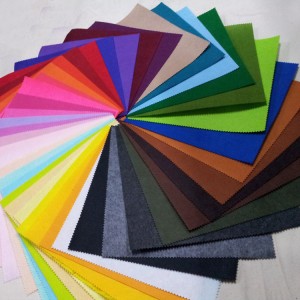In the race towards a sustainable future, the renewable energy sector is constantly on the lookout for innovative materials that can enhance efficiency and durability. Polyester felt has emerged as a key player, offering a plethora of solutions across various renewable energy applications. From solar power to wind energy, this versatile material is making significant contributions to the advancement of green technologies.
In solar power systems, polyester felt plays a crucial role in improving the performance and longevity of solar panels. Solar panels are exposed to harsh environmental conditions, including UV radiation, dust, and moisture. Polyester felt with UV – resistant properties is used as a protective layer in solar panel encapsulation. It shields the delicate photovoltaic cells from the damaging effects of the sun’s rays, preventing degradation and ensuring consistent power generation over the long term. Additionally, its dust – repellent and water – resistant features help keep the panels clean and free from moisture – induced damage, reducing the need for frequent maintenance.
For wind energy, polyester felt is utilized in the manufacturing of wind turbine blades. The blades are subjected to extreme mechanical stress, high – speed winds, and varying temperatures. Polyester felt, when integrated into the composite materials of the blades, enhances their structural integrity. Its high tensile strength and durability help the blades withstand the intense forces during operation, minimizing the risk of cracks and breakages. Moreover, polyester felt can also be used for sound dampening in wind turbine nacelles. By reducing the noise generated by the turbines, it helps mitigate the impact on the surrounding environment and communities, making wind energy a more acceptable and sustainable power source.
In the field of hydropower, polyester felt is employed in filtration systems. Water used in hydropower plants often contains impurities such as sediment, debris, and microorganisms. Polyester felt filters are highly effective in removing these contaminants, ensuring the smooth operation of turbines and preventing damage caused by abrasive particles. The material’s excellent filtration efficiency, combined with its chemical resistance to water – borne substances, makes it an ideal choice for this critical application.
Biomass energy, another important renewable energy source, also benefits from polyester felt. In biomass boilers and furnaces, polyester felt is used for insulation purposes. It helps retain heat within the system, improving the combustion efficiency and reducing heat losses. This not only enhances the overall performance of the biomass energy system but also contributes to cost savings by reducing fuel consumption. Additionally, in the processing of biomass feedstocks, polyester felt can be used in separation and filtration equipment to remove unwanted materials and ensure the quality of the final product.
As the demand for renewable energy continues to soar, the role of polyester felt is expected to become even more significant. Manufacturers are investing in research and development to further optimize the properties of polyester felt for renewable energy applications. With ongoing technological advancements and a growing focus on sustainable energy solutions, polyester felt is set to play an increasingly vital part in the global transition to a clean energy future, driving the growth and efficiency of the renewable energy sector.

Post time: Jun-03-2025
